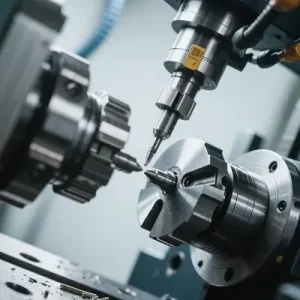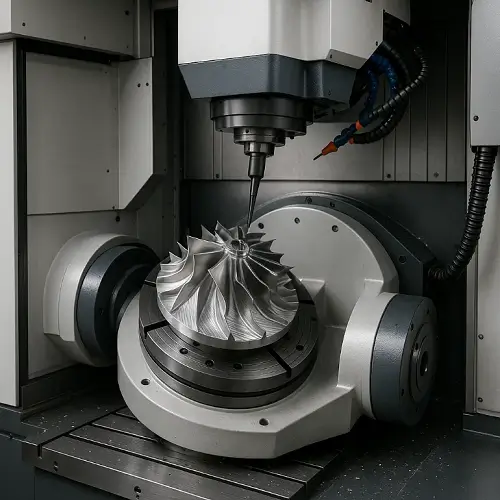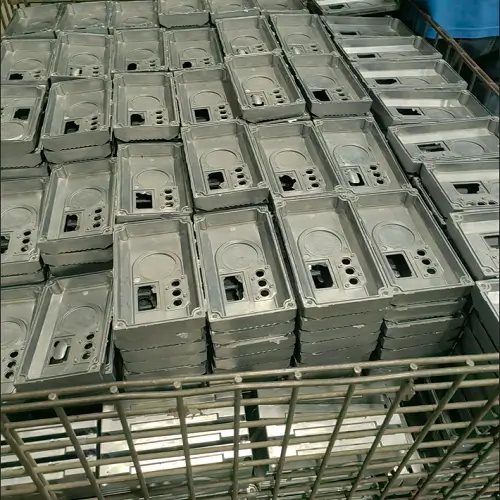The Origin and Development of CNC Machining:CNC machining originated in the 1940s. In 1952, the Massachusetts Institute of Technology (MIT) in the United States developed the world’s first numerically controlled milling machine by integrating a computer with a machine tool, marking the birth of CNC technology. The core principle is using computer programming to control tool paths, enabling high-precision and automated material cutting (subtractive manufacturing). Early CNC technology was primarily applied in the military and aerospace sectors, and later expanded to automotive, mold, and other industries, benefiting the development of many enterprises.

CNC Machining Principles
CNC machines operate based on pre-written G-code programs that drive cutting tools along three-dimensional axes to perform milling, turning, or drilling on metals, plastics, and other materials to create the desired part. For instance, a 5-axis CNC machine can simultaneously move in five directions to machine complex curved surfaces.
Common CNC Machine Functions
CNC Lathe
Mainly used for machining rotating parts such as shafts and disks. It performs outer diameter turning, facing, grooving, boring, and threading. Ideal for high-volume production of precision shaft parts.
CNC Milling Machine
Used for machining flat surfaces, curves, and grooves. A 3-axis mill handles standard parts, while a 5-axis mill can machine complex surfaces like impellers. Widely applied in mold making and precision component production.
CNC Grinding Machine
Provides ultra-high precision machining with tolerances up to ±0.001 mm. External grinders process shafts, internal grinders process precise bores, and surface grinders refine hard materials.
CNC Drilling Machine
Specialized in hole-making operations such as drilling, reaming, and tapping. Drilling and tapping centers integrate automatic tool change for batch processing of bolt holes, etc.
Advantages and Disadvantages of CNC Machining
Advantages:
High Precision: Tolerances can reach ±0.005 mm, a major advancement in precision parts production.
Material Versatility: Supports a wide range of materials, including metals (e.g., titanium and aluminum alloys) and engineering plastics.
Scalability: Significantly lower unit cost in mass production.
Disadvantages:
Geometric Limitations: Difficult to machine complex internal cavities or overhang structures.
Material Waste: 30–40% of raw material is removed during cutting.
High Equipment Cost: Advanced 5-axis machines are expensive.
CNC Machining Applications
Aerospace: Engine blades (precision titanium machining)
Automotive: Transmission housings (mass production)
Mold Making: Injection mold cavities (high surface quality)
The Origin and Development of 3D Printing:The concept of 3D printing can be traced back to the 19th century. In 1892, J.E. Blanther proposed a layered manufacturing method for topographic models. However, modern commercial 3D printing began in 1984 when Charles Hull invented stereolithography (SLA) and founded 3D Systems, launching the first commercial device. Later, technologies like Fused Deposition Modeling (FDM) and Selective Laser Sintering (SLS) emerged, driving 3D printing into the industrial sector.
3D Printing Principles
3D printing creates objects by adding material layer by layer. The core workflow includes:
Digital Modeling: Creating a 3D model and slicing it into 2D layers;
Material Deposition: Following slice data, materials are formed layer by layer through laser sintering (e.g., SLS) or fused extrusion (e.g., FDM). For example, metal 3D printing uses a laser to melt metal powder and build up dense parts.
Advantages and Disadvantages of 3D Printing
Advantages:
Design Freedom: Enables production of topologically optimized structures that traditional methods can’t achieve.
Material Efficiency: Utilization rates exceed 95%, ideal for expensive materials.
Rapid Prototyping: Reduces time from design to prototype by 50–70%.
Disadvantages:
Surface Quality: Visible layer lines require post-processing to improve finish.
Mechanical Performance Limits: Anisotropy reduces Z-axis strength by 30–50%.
High Costs: Metal powder and industrial equipment are expensive.
3D Printing Applications
Medical: Customized orthopedic implants (printed in titanium alloy)
Prototyping: Functional verification samples (development cycle shortened by 50%)
Complex Molds: Conformal cooling channels (shortens injection molding cycle by 25%)
Comparison of CNC Machining and 3D Printing in Application Scenarios
| Field | CNC Machining | 3D Printing |
|---|---|---|
| Aerospace | Engine blades, high-precision components | Lightweight lattices, integrated nozzles |
| Medical | Surgical tools, implant surface finishing | Customized implants, surgical guides |
| Automotive | Transmission housings, crankshafts | Prototype testing, customized interior parts |
| Molding | Precision mold cavity machining | Conformal cooling mold structures |
Technical and Economic Comparison (Based on Typical Aluminum Part Production)
| Metric | CNC Machining | 3D Printing |
|---|---|---|
| Unit Cost (100 pieces) | $18.5 | $52.3 |
| First Part Delivery Time | 8 hours (with programming) | 3 hours |
| Minimum Economic Batch | 50+ pieces | 1–20 pieces |
| Design Change Cost | $500+/change | $50/change |
In-Depth Cost Model Comparison
| Factor | CNC Machining | 3D Printing |
|---|---|---|
| Fixed Cost | High (equipment/tooling) | Low (no tooling) |
| Marginal Cost | Decreases with volume (economies of scale) | Nearly constant (unit cost ≈ material + energy) |
| Hidden Cost | Tool wear (e.g., carbide tool life ≈ 15 min cutting) | Support removal (up to 30% of print time) |
By understanding the comparison between these two technologies through data, one can better select the right manufacturing method: opt for 3D printing for small batches and complex designs, and choose CNC machining for high precision and large-scale production. The integration of both is driving manufacturing toward greater efficiency and flexibility.
At Jeek Rapid Manufacturing, we specialize in both CNC machining and industrial-grade 3D printing, enabling us to deliver the best solution tailored to your design, budget, and production needs.
📩 Need a quote?
Upload your 3D CAD files or technical drawings, and our engineering team will get back to you within 12 hours with a detailed quotation.
👉 Request a Free Quote Now – Fast, confidential, and commitment-free.


